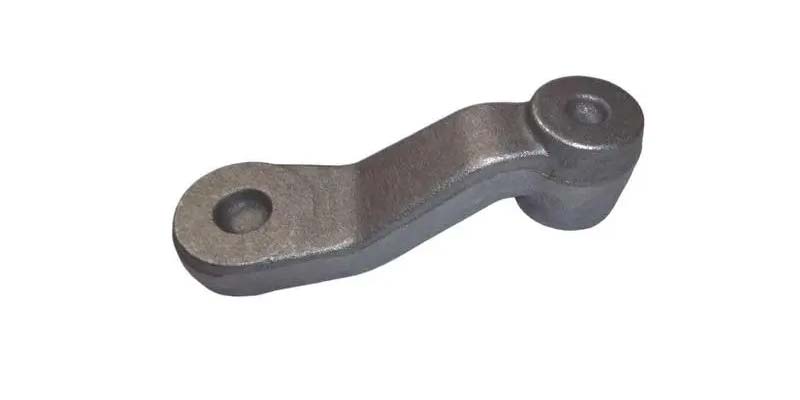- Contact Innally, Let you purchase forgings in China more favorable prices, products more assured!
- Hotline:+(86)15038323776 Email:innally@innally.com
What are the key technologies in the production process of control arm forging?
- Category: Aluminium alloy forging, Thermal forging
- |
- Date: 01/12/2023
the production process of control arm forgings involves a number of key technical links, including material selection and pretreatment technology, forging process and die design technology, heat treatment and testing technology, quality control and continuous improvement technology.
Product Details
Control arm forging is a key component in automotive suspension system, its quality and performance directly affect the safety and comfort of the vehicle. In order to produce high quality control arm forging, it is necessary to master a series of key technologies. This paper will introduce several key technologies in the forging process of the control arm.
First, material selection and pretreatment technology
The material selection of control arm forging is the primary key technology in the manufacturing process. Commonly used materials include high-strength alloy steel, aluminum alloy and so on. When selecting materials, it is necessary to consider its strength, toughness, corrosion resistance and other performance indicators to ensure that the forgings can withstand a variety of complex mechanical effects during use.
In terms of material pretreatment, it is necessary to conduct chemical composition analysis and metallographic structure detection of materials to ensure that the quality of materials meets the requirements. At the same time, it is also necessary to preheat the material to improve the plasticity and fluidity of the material and prepare for the subsequent forging process.

- Forging process and mold design technology
Forging is the key link in the manufacturing process of control arm forging. In this process, it is necessary to put the preheated blank into the mold, apply the appropriate pressure and impact force, make it deform and fill the mold cavity, so as to obtain the desired forging shape. Therefore, forging process and die design technology are the key factors affecting the quality and performance of forging parts.
In terms of forging process, it is necessary to select the appropriate forging temperature, forging speed, impact pressure and other parameters to ensure that the internal organization of the forging is dense and no cracks and other defects. At the same time, it is also necessary to monitor and adjust the forging process in real time to ensure that the dimensional accuracy and appearance quality of the forging meet the requirements.
In terms of mold design, it is necessary to design a reasonable mold structure and cavity shape according to the shape and size requirements of the forging. The structural design of the mold needs to take into account the strength, stiffness, wear resistance and other performance requirements of the mold, as well as the manufacturing and repair costs of the mold. The design of the cavity shape needs to take into account the fluidity and fillability of the metal to ensure that the forging can completely fill the mold cavity and obtain the desired shape.
Third, heat treatment and testing technology
Heat treatment is one of the important links in the manufacturing of control arm forgings. Heat treatment can improve the mechanical properties, corrosion resistance and other performance indicators of forgings, and increase the service life of forgings. Commonly used heat treatment methods include quenching, tempering, normalizing and so on. In the processing process, it is necessary to strictly control parameters such as temperature, time and cooling rate to ensure that the performance of the forging meets the design requirements.
Detection technology is also one of the key technologies in the manufacturing of control arm forgings. Commonly used testing methods include appearance testing, size testing, chemical composition analysis, mechanical properties testing and so on. Through the detection can be found in the forging cracks, pores and other defects, as well as dimensional accuracy and performance indicators of the deviation, so as to take timely measures to repair or scrap treatment.
Fourth, quality control and continuous improvement technology
Quality control is one of the important links in the manufacturing process of control arm forging. Through the establishment of a sound quality control system, raw materials, semi-finished products and finished products can be comprehensively inspected and tested to ensure that the quality of forging meets the requirements. At the same time, it is also necessary to monitor and manage all aspects of the production process, discover and deal with problems in time, and ensure the stability and controllability of the production process.
Continuous improvement technology is one of the important means in the manufacturing process of control arm forging. By analyzing and summarizing the problems in the production process, we can find the root cause of the problems and take improvement measures to improve production efficiency and product quality. Common continuous improvement techniques include process optimization, equipment upgrading, and automation transformation. Through continuous improvement, production costs can be reduced and market competitiveness improved.
In short, the production process of control arm forgings involves a number of key technical links, including material selection and pretreatment technology, forging process and die design technology, heat treatment and testing technology, quality control and continuous improvement technology. Mastering these key technologies can ensure the production of high quality control arm forgings and meet the market demand.
nannan
INNALLY mainly provides you with various types of cast and forged parts products. Welcome your inquiries! innally@innally.com
Related Products
Search
Forging center
- Steel forgings
- Aluminium alloy forging
- Titanium alloy forging
- Stainless steel forging
- Copper forging
- Automotive forgings
- Locomotive forging
- Bicycle forgings
- Motorcycle forging
- Rigging and fasteners
- Bearing forging
- Electric power fittings
- Marine forging
- Mechanical forgings for metalworking
- Mining machinery forgings
- Marine engineering forgings
- Construction machinery forgings
Popular product

© 2025. All Rights Reserved.






